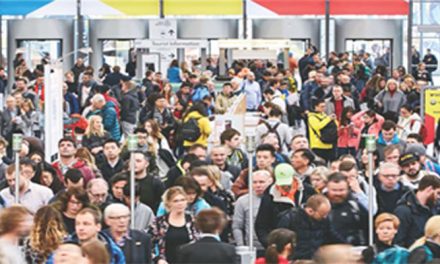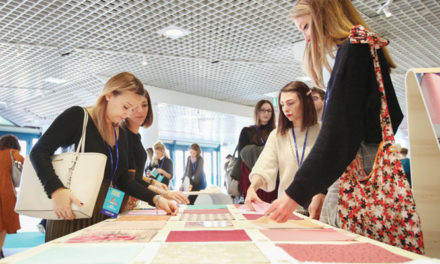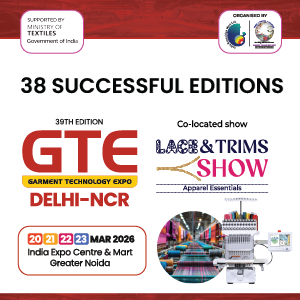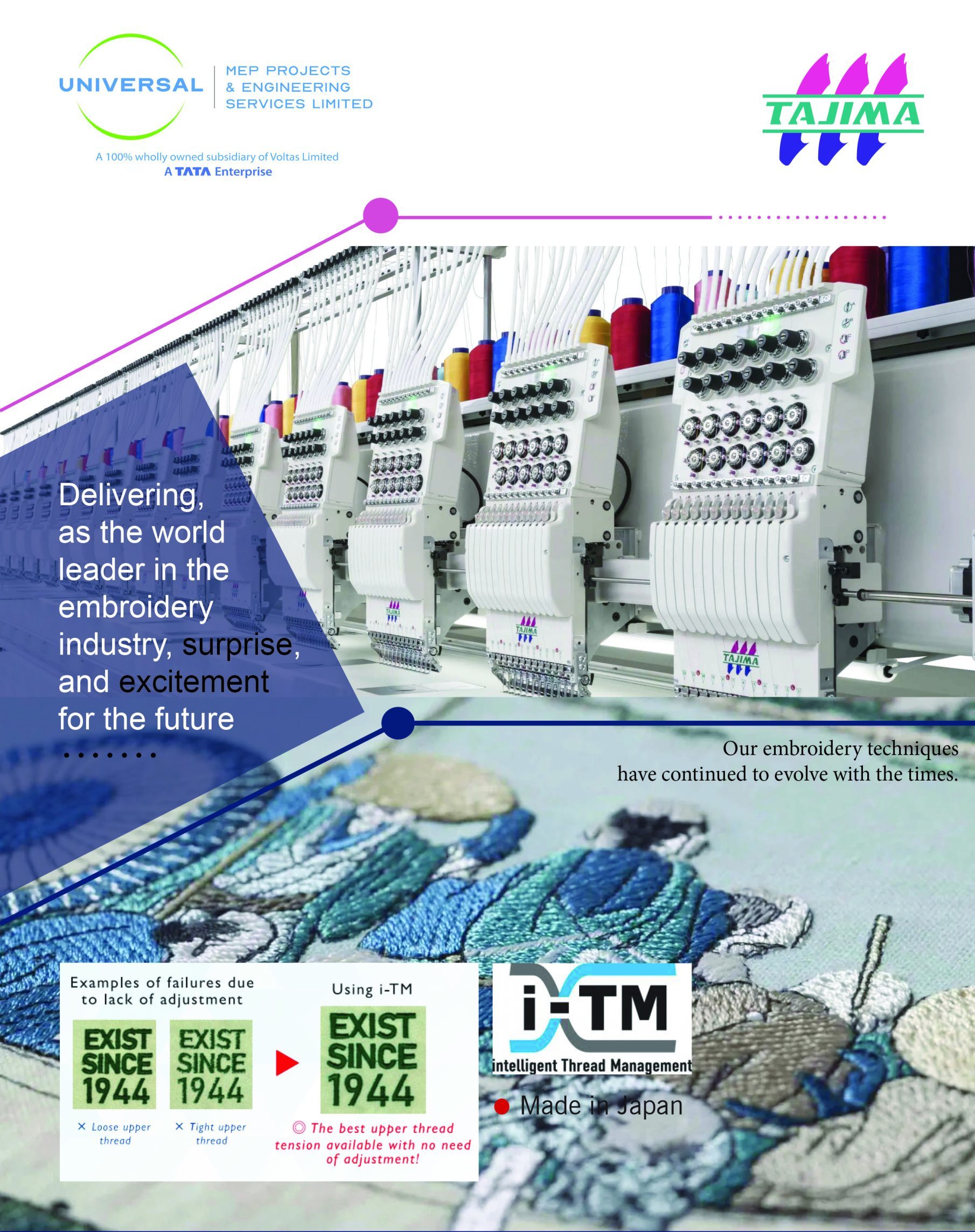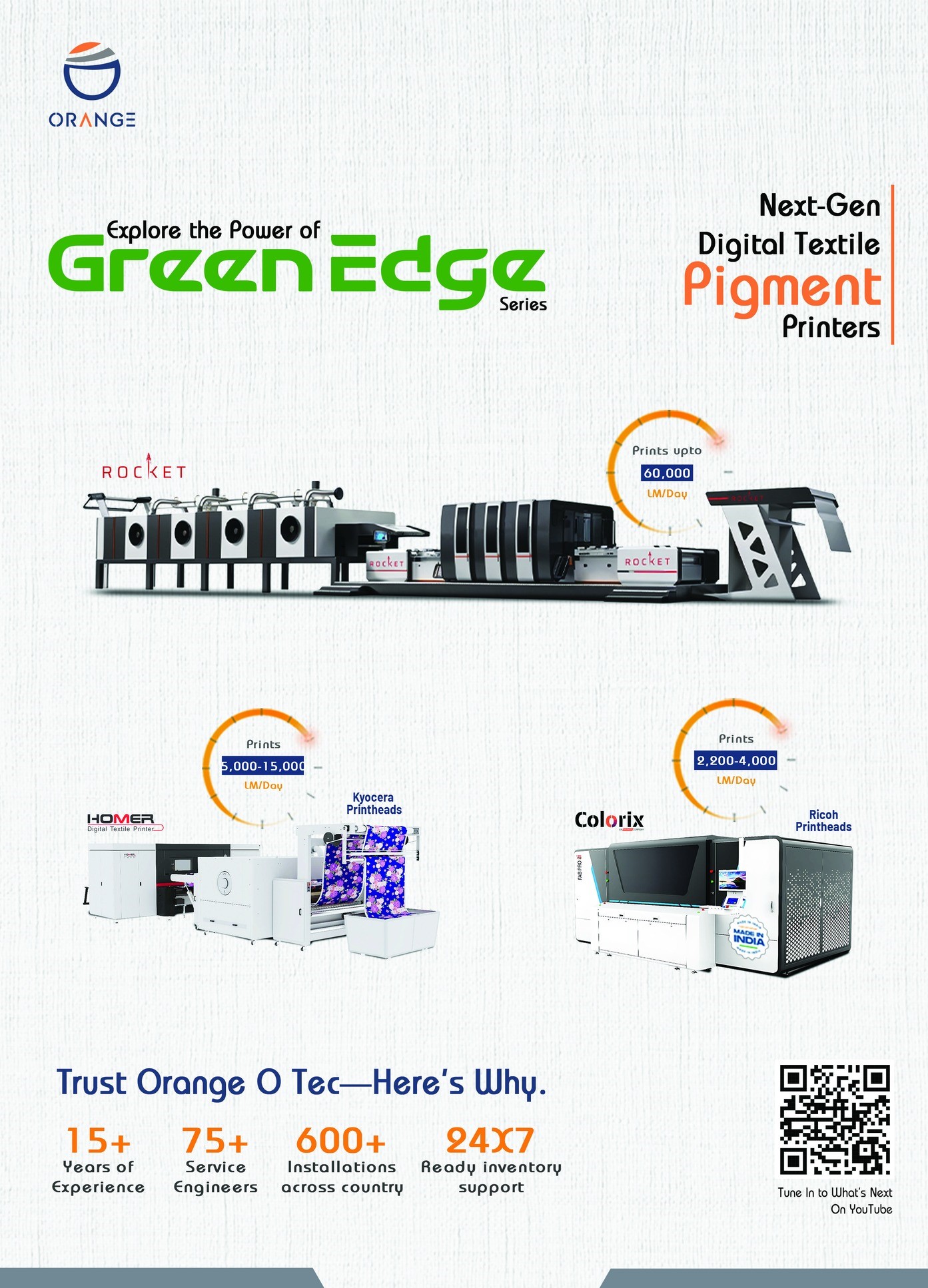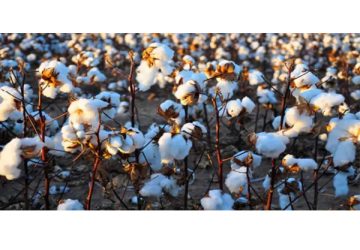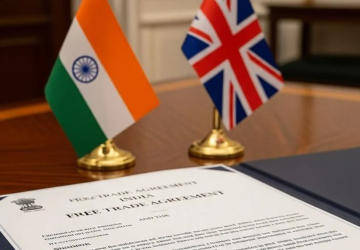
Bharat Tex 2025, India’s largest global textile event, was successfully organised from February 14 to 17, 2025, at Bharat Mandapam, New Delhi. The event spanned 2.2 million square feet and featured over 5,000 exhibitors, providing a comprehensive showcase of India’s textile ecosystem. More than 120,000 trade visitors from 120+ countries, including global CEOs, policymakers, and industry leaders, attended the event. Bharat Tex 2025 served as a platform to accelerate the government’s “Farm to Fibre, Fabric, Fashion, and Foreign Markets” vision. India’s textile exports have already reached Rs. 3 lakh crore, and the goal is to triple this to Rs. 9 lakh crore by 2030 by strengthening domestic manufacturing and expanding global reach.
 Exhibitions pertaining to handicrafts, garment machinery, and dyes and chemicals were held from February 12-15 at the India Expo Centre and Mart Greater Noida, NCR Delhi. The event demonstrated India’s leadership in the textile sector and its commitment to innovation, sustainability, and global collaboration. The 2nd edition of Bharat-Tex was inaugurated with a traditional lamp lighting ceremony in the presence of Shri Giriraj Singh, Hon’ble Union Minister of Textile, Govt. of India; Shri Pabitra Margherita, Hon’ble Union Minister of State for External Affairs & Textiles; Smt. Meelam Shami Rao, Secretary, Ministry of Textile, Govt. of India; and other distinguished dignitaries.
Exhibitions pertaining to handicrafts, garment machinery, and dyes and chemicals were held from February 12-15 at the India Expo Centre and Mart Greater Noida, NCR Delhi. The event demonstrated India’s leadership in the textile sector and its commitment to innovation, sustainability, and global collaboration. The 2nd edition of Bharat-Tex was inaugurated with a traditional lamp lighting ceremony in the presence of Shri Giriraj Singh, Hon’ble Union Minister of Textile, Govt. of India; Shri Pabitra Margherita, Hon’ble Union Minister of State for External Affairs & Textiles; Smt. Meelam Shami Rao, Secretary, Ministry of Textile, Govt. of India; and other distinguished dignitaries.
This comprehensive approach not only highlighted the diversity of the textile industry but also promoted collaboration among various stakeholders. Attendees included manufacturers, designers, and retailers, all keen to explore innovative solutions and trends that could shape the future of textiles in India and beyond.
India is the sixth-largest exporter of textiles globally, contributing 8.21% to the country’s total exports in 2023-24. The sector holds a 4.5% share in global trade, with the United States and European Union accounting for 47% of India’s textile and apparel exports.
 From an employment perspective, the textile industry provides direct employment to over 45 million people and supports the livelihoods of over 100 million individuals indirectly, including a large proportion of women and rural workers. It aligns with key government initiatives such as Make in India, Skill India, Women Empowerment, and Rural Youth Employment, reinforcing its role in inclusive economic development.
From an employment perspective, the textile industry provides direct employment to over 45 million people and supports the livelihoods of over 100 million individuals indirectly, including a large proportion of women and rural workers. It aligns with key government initiatives such as Make in India, Skill India, Women Empowerment, and Rural Youth Employment, reinforcing its role in inclusive economic development.
The government’s focus on increasing textile manufacturing, modernising infrastructure, fostering innovation, and upgrading technology has strengthened India’s position as a global textile hub. Bharat Tex 2025 provided a platform to showcase these advancements while promoting sustainable and high-value textile production.
Bharat Tex 2025 reinforced India’s role as a key player in the global textile supply chain. Discussions during the event spanned across multiple themes, including sustainable manufacturing, trade expansion, digital transformation, and startup driven growth. The engagement of key textile-producing states such as Gujarat, Madhya Pradesh, Uttar Pradesh, Maharashtra, Karnataka, and Tamil Nadu further highlighted the regional strength and diversity within India’s textile sector.
 On 16th February, the Prime Minister, Shri Narendra Modi, addressed Bharat Tex 2025 at Bharat Mandapam in New Delhi. He also took a walkthrough of the exhibition showcased on the occasion. Addressing the gathering, the Prime Minister welcomed everyone to Bharat Tex 2025 and remarked that today Bharat Mandapam was witnessing the 2nd edition of Bharat Tex. He added that the event gave a glimpse of India’s heritage as well as the prospects of Viksit Bharat, which was a matter of pride for India. “Bharat Tex is now becoming a mega global textile event,” remarked Shri Modi. He added that all the twelve communities related to the spectrum of the value chain were part of the event this time. The Prime Minister highlighted that Bharat Tex was becoming a strong platform for engagement, collaboration, and partnership for the policymakers, CEOs, and industry leaders from across the world. He lauded the efforts of all the stakeholders involved in the organisation of the event.
On 16th February, the Prime Minister, Shri Narendra Modi, addressed Bharat Tex 2025 at Bharat Mandapam in New Delhi. He also took a walkthrough of the exhibition showcased on the occasion. Addressing the gathering, the Prime Minister welcomed everyone to Bharat Tex 2025 and remarked that today Bharat Mandapam was witnessing the 2nd edition of Bharat Tex. He added that the event gave a glimpse of India’s heritage as well as the prospects of Viksit Bharat, which was a matter of pride for India. “Bharat Tex is now becoming a mega global textile event,” remarked Shri Modi. He added that all the twelve communities related to the spectrum of the value chain were part of the event this time. The Prime Minister highlighted that Bharat Tex was becoming a strong platform for engagement, collaboration, and partnership for the policymakers, CEOs, and industry leaders from across the world. He lauded the efforts of all the stakeholders involved in the organisation of the event.
Driving Sustainability: The Core of Bharat Tex 2025
Sustainability is no longer optional for the textile industry; it has become a necessity. This is why the twin themes of circularity and sustainability took centre stage at this year’s event. Bharat Tex 2025 provided a platform to unite stakeholders across the value chain, fostering dialogue and action to embed sustainable practices into the industry’s core. By focusing on eco-friendly innovations, circular economy models, and ethical sourcing, the event aimed to balance economic growth with environmental responsibility.
Evolution of the Indian Textile Industry
India’s textile industry has undergone significant transformation, becoming a global leader in textile and garment production. With a projected market size of US$ 350 billion by 2030, up from US$ 176 billion in 2023, the industry is growing at a CAGR of nearly 7.8%. Despite its impressive expansion, the industry faces increasing pressure to address its environmental footprint, including challenges such as waste generation, water pollution, and reliance on synthetic fibres. A national-level sustainability cum ESG task force in the Ministry of Textiles is currently consulting all stakeholders to create pathways for a circular and sustainable textile ecosystem in India.
Eco-Friendly Innovations in Textile Production
The heart of Bharat Tex 2025 lay in showcasing groundbreaking innovations that prioritised sustainability at every stage of textile production, shaping the future of the global textile industry. The event highlighted how sustainable practices could help overcome challenges and position India as a responsible global textile leader.
Special Pavilions and Exhibitions
• Bharat Tex showcased cutting-edge innovations in sustainable textiles, ranging from eco-friendly fabrics to zero-waste design techniques.
• Exhibitors demonstrated water-efficient dyeing processes, organic cotton farming, and other initiatives focused on circularity and decarbonisation.
• Initiatives to minimise textile waste were highlighted, such as upcycling scraps into new products and implementing closed-loop manufacturing processes.
• Winners of circular design contests, sustainability hackathons, and other innovators presented their solutions in a special pavilion.
• A showcase featured Kasturi Cotton, a new standard with a transparently traceable value chain and globally accepted quality standards.
• Work from individual industries and MSME textile clusters like Panipat, Tirupur, and Surat was showcased.
• Renewable Energy Integration: Exhibitors demonstrated the adoption of solar and wind power, reducing carbon emissions and energy costs.
• Sustainable Fashion: Bharat Tex highlighted innovations in sustainable fashion, where designers and brands presented collections that balanced sustainability with style and quality.
These innovations exemplified how the Indian textile industry is embracing sustainable solutions to address its environmental challenges.
Circular Economy: Closing the Loop
A transition to a circular economy is central to Bharat Tex 2025’s vision. By minimising waste and maximising resource use, the industry can address critical environmental concerns.
• Upcycling Initiatives: Innovative practices demonstrate how pre- and post consumer textile waste can be transformed into high-value garments, contributing to the circular economy.
• Closed-Loop Manufacturing: Advanced technologies enable fibres to be recycled repeatedly without quality loss, revolutionising sustainable production.
• Recycling Innovations: Creative solutions for repurposing discarded garments into new materials showcase the potential to turn waste into valuable resources.
These practices align India’s textile industry with global efforts to create a more sustainable and resource-efficient future.
Major Sessions and Workshops on Sustainability
India Tex 2025 went beyond the products on display to over 70 knowledge sharing sessions and workshops, providing practical insights into implementing sustainable practices:
• ESG& Sustainability: Exploring how environmental, social, and governance principles are reshaping the textile landscape.
• Circularity in Textiles: Strategies for embedding circular economy principles into supply chains.
• Pathways to Decarbonisation: Crafting sustainable value chains and driving a green economic transition.
• Sustainable Futures: The future of sustainable textiles, discovering best practices in material and energy efficiency, and eliminating hazardous chemicals.
• Economic Greenprints: Navigating the financial landscape of sustainability.
These forums empower participants to bridge the gap between sustainability goals and practical implementation.
A Vision for the Future
The textile sector’s vision for the future focuses on ensuring the industry remains competitive while meeting global sustainability standards. Bharat Tex 2025 seeks to spotlight and amplify that vision, standing as a transformative platform that showcases India’s leadership in sustainable textiles and innovation. With real-world examples of eco-friendly practices and groundbreaking solutions, the event highlights the tangible benefits of making sustainability a core principle.
Multilateral conclaves on sustainability with stakeholders and development partners will explore solutions for the twin challenges of cost and sustainable production. Sessions on global sustainability standards will debate emerging global trends in sustainability, alongside India’s leading innovations in textiles. Bharat Tex also addresses the sector’s challenges – such as finance, technology, capital, and skills- while engaging with global best practitioners to seek solutions.
By promoting trade and investment, inspiring green innovation, and preserving cultural heritage, Bharat Tex 2025, India’s largest global textile show, paves the way toward a future where economic growth and environmental responsibility coexist harmoniously.


